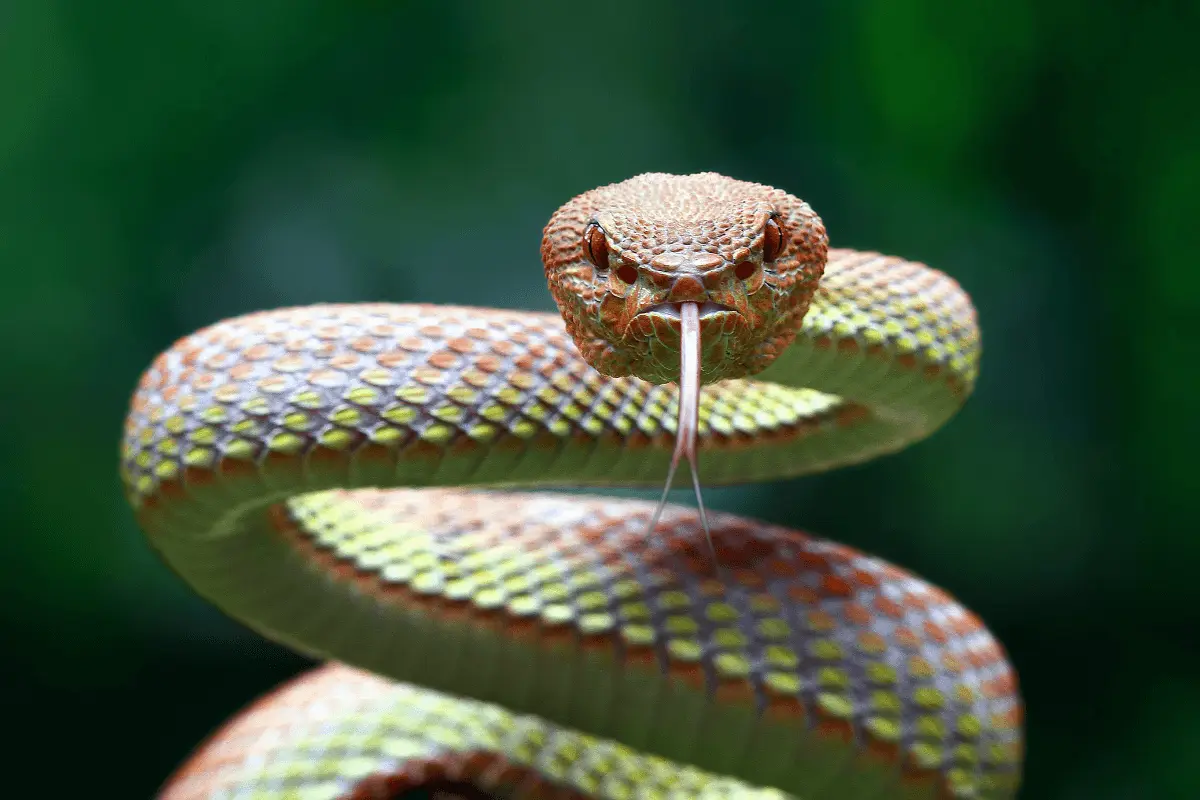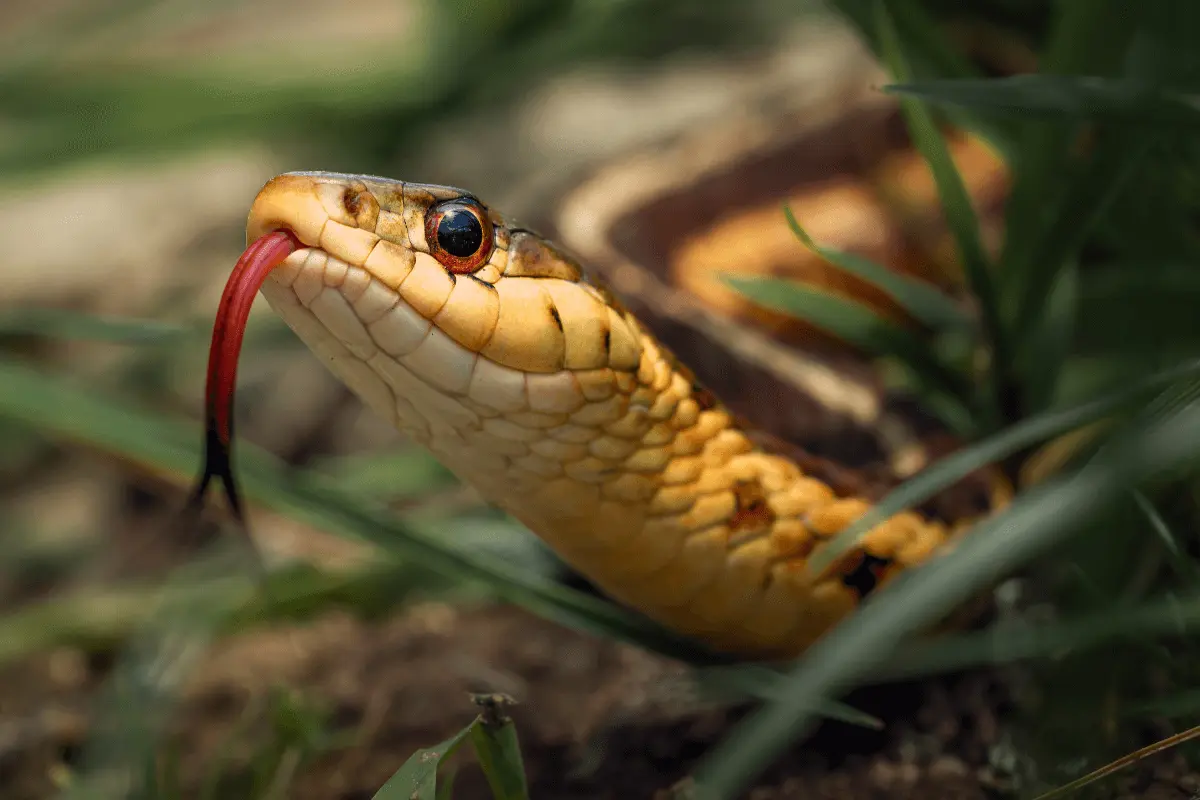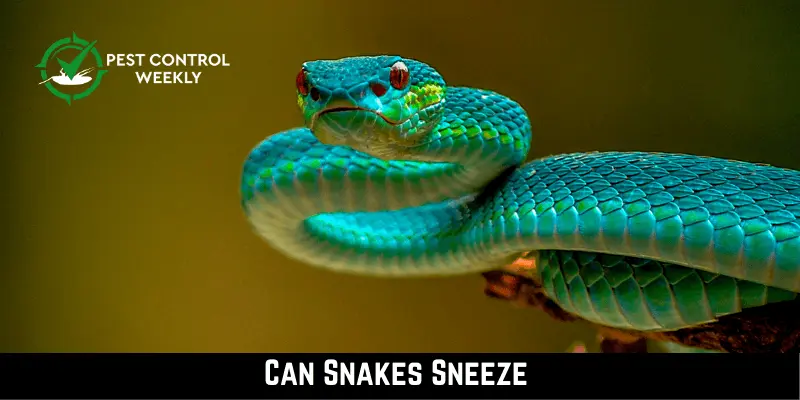Snakes have a special place in the wide and interesting world of animals because of how they evolve and behave. Due to their strange habits and adaptations, these interesting animals often raise many concerns. As we explore snake biology, one question often arises: Can Snakes Sneeze?
The basic answers to this question are more complicated than a yes or no. Snakes, unlike humans and many other animals, do not sneeze in the usual sense. Their’sneeze’ is more correctly defined as a powerful exhale or hiss, used to expel foreign particles or excess mucus from the respiratory system.
In this, we’ll learn more about the complex anatomy of snakes, investigate how they deal with respiratory irritants, and explain the mysterious phenomenon of snakes’sneezing.
Defining ‘Sneezing’ in Snakes
Snakes are exciting animals of everything around us. Due to their odd anatomy, they lack a diaphragm, an important part of the normal respiratory system. Thus, sneezing in humans and many animals doesn’t change right away.
However, the claim that snakes cannot sneeze is not true. Their actual’sneeze’ is a strong cough fit meant to clear their respiratory tract of irritants. It sounds more like a hiss or an exhale and is used to clear the respiratory tract of any impediments. Having difficulty breathing is another possible cause. Like any other creature, it’s important to respect and understand their special biology.
The Mechanism of Sneezing in Animals

Understanding why and how animals sneeze provides interesting facts on the relationship between biology, evolution, and survival. According to the American Journal of Physiology-Legacy Content The common sneeze is an automatic, powerful action that is meant to get rid of things that are irritating or harmful to the nose. The trigeminal nerve and the medulla oblongata in the brain work together to activate this ability, which is present in most animals.
When the nasal mucosa is irritated, nerves send signals to the brain, setting off an automatic reaction that ends with a strong exhalation through the mouth and nose. A sneeze may seem like a simple reflex, but it is actually a powerful example of the complex neurobiological processes in action in the body, and it serves as a protective mechanism, vigilantly protecting the important balance of the animal’s health.
Unique Characteristics of Snake Respiratory System

According to an article published in The Science of Nature following are the characteristics of a snake’s respiratory system:
- Single Lung Dominance: Many snakes, especially the longer species, have only a single lung that can breathe air. This modification helps them make the most of their interior space, contributing to their thin shape.
- Absence of Diaphragm: Snakes don’t have a diaphragm, a muscle that helps animals breathe. They control the volume of their mouth cavity and the movement of their bodies to improve their lung capacity and oxygen uptake.
- Tracheal Extension: Snakes can extend their trachea out of their mouths, making it easier for them to breathe while eating big prey. This extraordinary adaption allows them to keep breathing even over long periods of eating.
- Epiglottis Function: The snake’s epiglottis, an opening of cartilage at the base of the tongue, acts as a covering when the animal is eating or drinking water, keeping its mouth open.
- Air sacs: Some snake species have air sacs that store air and help them breathe, especially when eating food for a long time.
- Glottis Mobility: Unlike in other animals, snakes’ glottis is mobile, so they can move it to the side of their mouths when they eat to keep air flowing.
- Respiratory Cycle: Their breathing cycle differs from other animals because they take a long break between exhaling and inhaling. This is called an “apneustic period” and is thought to be a response to their slow metabolic rate.
Anatomy of a Snake’s Respiratory System
- Nostrils and Nasal Cavities: Snakes have two nostrils that lead to nasal cavities, the starting point for airflow into the respiratory system.
- Jacobson’s Organ: This organ is not directly involved in breathing but is essential to a snake’s sense of smell, allowing them to “taste” the air to discover prey and predators.
- Glottis: The glottis is a special organ inside the mouth. As an “air gate,” it regulates body posture during prey ingestion, thus crucial to the animal’s survival.
- Trachea: The trachea, or windpipe, links the mouth to the lungs. It may be extended out of the mouth and is bendable, allowing for easy breathing even when swallowing huge prey.
- Lungs: The right lung usually functions in snakes and is stretched out to fit the animal’s stretched body. A smaller left lung may exist or be completely missing in some animals. The saccular lung is a segment of the lung located in the back of certain snakes that may help in flotation for aquatic species.
- Air Sacs: Some snakes have air sacs near the end of their airways. These air sacs act as a reserve for air, which is helpful when eating for a long time.
Reasons Of Sneezing In Snakes
- Debris Expulsion: Like many other animals, snakes sneeze or forcefully breathe to get dust or other allergens out of their airways.
- Humidity Balance: Snakes might sneeze to keep the humidity in their breathing tracts balanced, which helps them keep their delicate internal environment.
- Respiratory Infections: Respiratory diseases, which are often caused by bacterial or viral infections, can cause you to make too much mucus, which can make you sneeze as a way to get rid of it.
- Presence of Parasites: External or internal parasites can irritate the snake’s breathing system, causing the snake to sneeze as a response.
- Environmental Changes: Rapid changes in the environment, like changes in temperature or humidity, can make the snake uncomfortable and make it sneeze as it gets used to the new conditions.
Common Misconceptions About Snakes Sneezing
There are a lot of myths and misunderstandings about snakes, especially regarding their “sneezing,’ which is really odd behavior. Contrary to popular belief, snakes do not sneeze like humans or other mammals. They have a single main lung and no diaphragm, therefore, their breathing is different.
According to popular belief, snakes do not sneeze to clear their noses of irritants; rather, they sneeze to remove unwanted particles from their trachea or lungs. Unlike mammals, where sneezing is a simple reaction to allergens, snake “sneezing” is typically a symptom of more serious underlying medical issues.
How Do Snakes Deal with Respiratory Irritants?
Due to their different respiratory systems, snakes use different techniques to deal with respiratory irritants, such as the lack of a complex sneeze reflex in mammals. They can hiss or exhale loudly to clear their airways of any blockages.
Some snakes will even vomit if the irritant gets too far into the respiratory system. In addition to the respiratory system’s defenses, the lymphatic system of a snake can help fight off illnesses and eliminate pollutants.
Do Snakes Exhibit Similar Responses to Sneezing?
Although snakes have a behavior that looks a lot like sneezing, it is not at all related to the sneeze reflexes of mammals. This action, usually a loud hiss or a breath, is mainly a way to clear the respiratory system of impure particles or too much mucus.
Different types of snakes may exhibit what seems like a sneeze, but it’s something else entirely. In addition, the frequency and severity of this release might vary, signaling anything from mild irritation to life-threatening respiratory infections.
How Long Can a Snake Live With a Respiratory Infection?
Multiple factors affect how long a snake with a respiratory illness lives, such as the nature of the infection, its overall health, the snake’s species, and the treatment it receives. Respiratory infections can become lethal if ignored.
A snake may recover from a respiratory illness with the help of a veterinarian, though the length of time it takes to recover fully varies. To improve the snake’s prognosis, it is essential to seek veterinary care at the earliest indication of respiratory distress, such as sneezing,’ wheezing, or mucus secretion.
Conclusion
Snakes’ respiratory system and sneezing behavior reveal interesting facts about their evolutionary successes and adaptations. Snakes don’t sneeze, but their unique way of releasing pollutants is impressive. The details of their respiratory system, how they handle possible irritants, and the communication of potential health fears such as respiratory infections, show the complexity and flexibility of these interesting animals. Comprehending these details is not only interesting but also important for anyone caring for these reptiles to maintain their well-being and longevity.
FAQs
References
De Souza, R.B.B., Klein, W. Modeling of the respiratory system of the long-necked Triassic reptile Tanystropheus (Archosauromorpha). Sci Nat 109, 55 (2022). https://doi.org/10.1007/s00114-022-01824-7
Journal Of Neural mechanisms of sneeze
